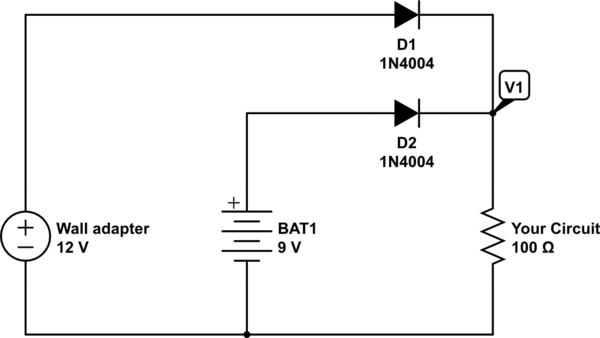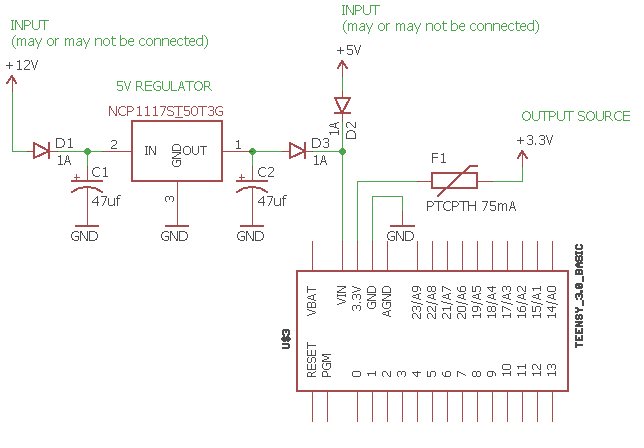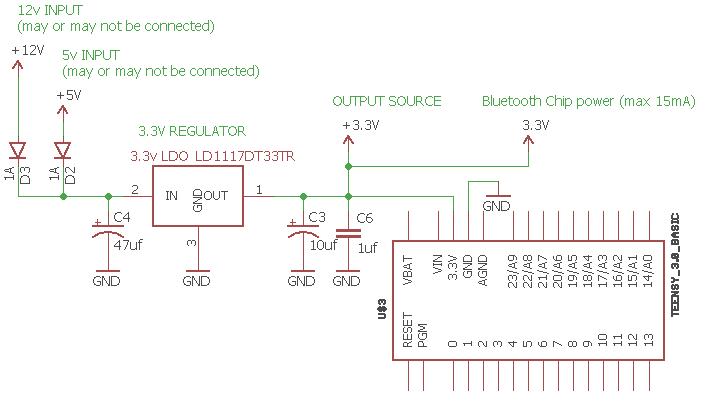I am using the teensy 3.1 in a project in which it may be powered by either 5v or 12v (probably only one or the other. It is unlikely but possible that it may have both connected at the same time)
The arduino UNO says that it can take input power of 7-12v and in its schematics it shows this

Also I found this which shows multiple power sources

Also, I need to supply 3.3v power to something. I know that the 3.3v pin on the teensy can supply up to 100mA, so I was just going to use that. But since I was worried about something maybe drawing too much power I thought it would be good to put a 75mA resettable fuse on it (for a bit less than 100mA to be safe?)
And so I came up with this:

Just wanted to post this here and see if anyone can see something wrong with it or a better way to do it since I have never done anything like this before. I am not entirely sure about how to choose the capacitors for this but I am just copying the arduino schematics.
Also what's with that extra 100nf cap on the right side of the arduino power circuit? Do I need that?
The arduino UNO says that it can take input power of 7-12v and in its schematics it shows this

Also I found this which shows multiple power sources

Also, I need to supply 3.3v power to something. I know that the 3.3v pin on the teensy can supply up to 100mA, so I was just going to use that. But since I was worried about something maybe drawing too much power I thought it would be good to put a 75mA resettable fuse on it (for a bit less than 100mA to be safe?)
And so I came up with this:

Just wanted to post this here and see if anyone can see something wrong with it or a better way to do it since I have never done anything like this before. I am not entirely sure about how to choose the capacitors for this but I am just copying the arduino schematics.
Also what's with that extra 100nf cap on the right side of the arduino power circuit? Do I need that?


